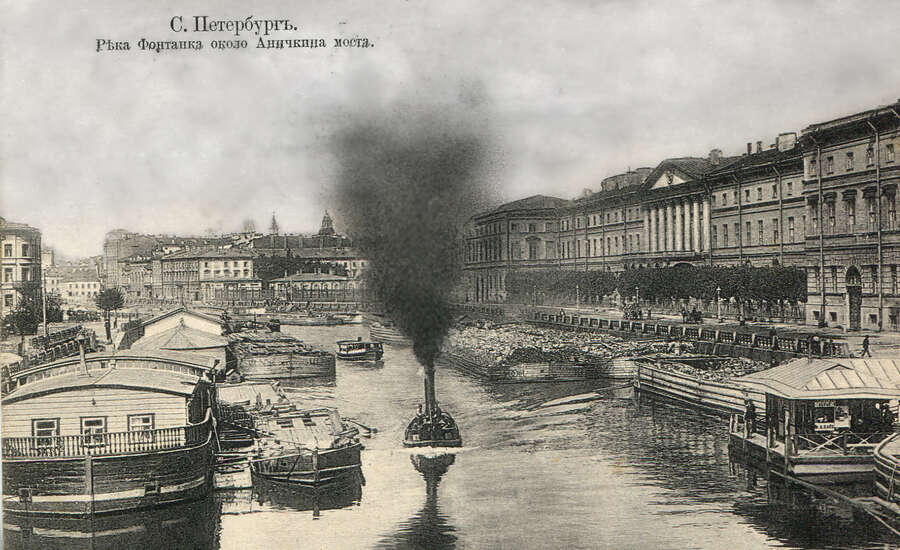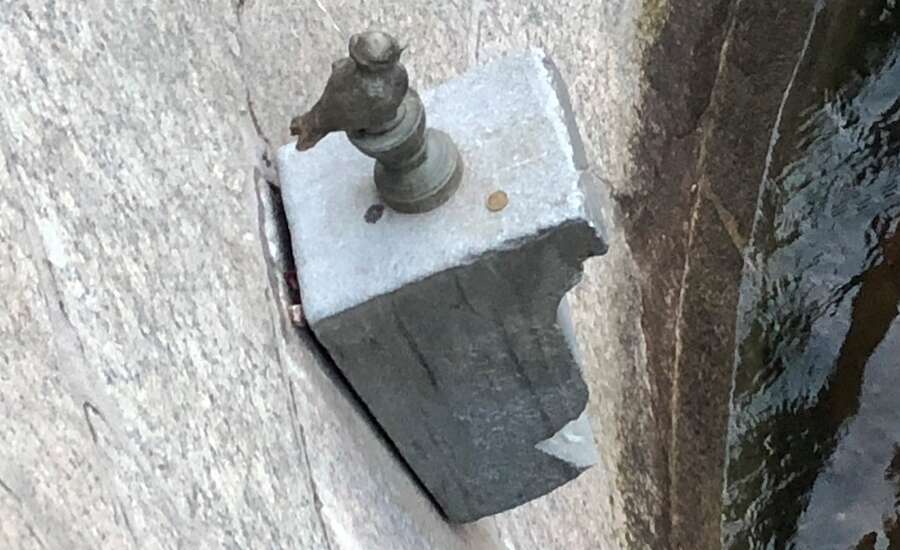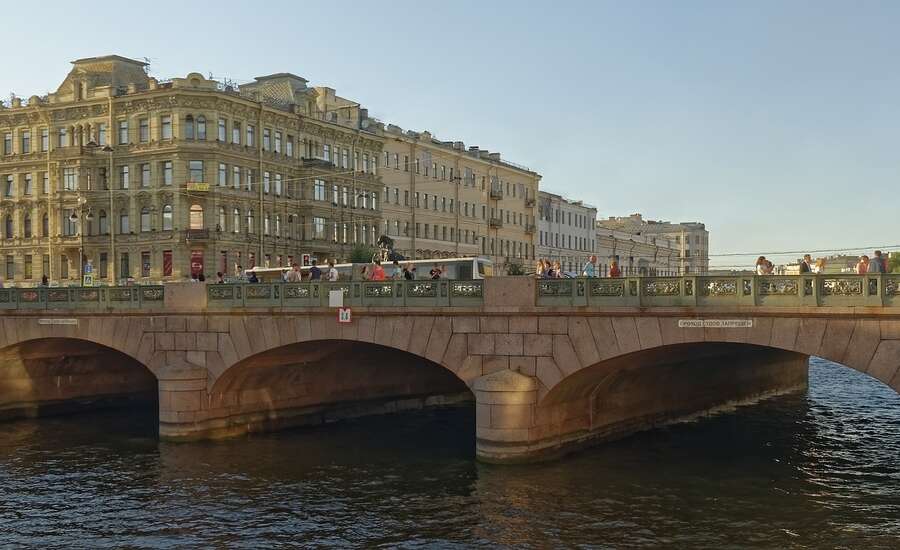
Photo by Vilve Roosioks from Pixabay
For more than two centuries, the river Fontanka has been second only to the Neva as the main waterway of St Petersburg. In Imperial times, it acted as the bulwark that encircled the palaces of the bourgeois safely in the central district: away from the pauperdom of the south and filthy docks of the north.
Promenading down the Fontanka, surrounded as it is to this day by palaces and drawbridges, it is hard to imagine that it was once nothing more than a boggy river. Yet even in Peter the Great’s time the river was an unruly beast: spanning over 200m in some places and frequently flooding the streets with mud. Quite a few years past after the establishment of St Petersburg before the river was finally tamed. Indeed, the river was only embanked during Tsarina Anna’s reign. Even then, it was but a primitive wooden embankment. Nonetheless, as with most things in St Petersburg, Fontanka’s current state is much indebted to the genius of Peter the Great.

Fontanka river at Anichkow bridge. Post card, before 1915. Author Unknown. Restoration Vitold Muratov
Take the river’s rather grand name, Fontanka. Till 1719 the river was practically anonymous. Marked on maps as the nameless erik (canal), till Peter decided to build his summer palace on its banks the river lacked a proper title. Its new name, Fontanka, was the diminutive of the Russian word for fountain and alluded to the river's role in feeding the fountains of the Summer Palace’s gardens.
Did you know? Almost all of the Summer garden’s fountains were decimated in a tremendous flood in 1777. Though the fountains themselves weren’t reinstated till 2011, the name of the river lived on.
It took another great ruler, this time Catherine the Great, for any other notable changes to be made to Fontanka. The wide embankments lined with polished granite blocks and drawbridges decked with stone towers— iconic images that can be found on almost any postcard of St Petersburg— were mostly built by the order of Catherine in the mid 18th century. Since then, little has changed.
Did you know? The mansions lining Fontanka were home to many Russian greats including the poets Gavrila Derzhavin and Anna Akhmatova, writer Ivan Turgenev and none other than Alexander Pushkin. The Pushkin family apartment is now a part of the Pushkin Loft hotel.
No longer straddling between the affluent city of the north and the suburban squalor in the south, the Fontanka now runs through the very heart of the city. The relatively shallow depth of Fontanks means it is no longer a commercially viable route. Nevertheless, dozens of barges still weave through its low-hanging drawbridges from late spring to autumn; ferrying tourists eager to enjoy unobstructed views of St Petersburg’s best sites.
In July, hoards of sport-fanatics take to the waters in fancy-dress for the annual Fontanka-SUP festival. While in winter, even more daring souls stroll down the frozen river in the dead of night. Needless to say, we don’t recommend that!
Did you know? In the last 150 years, the sole new addition to the river was so minuscule (weighing in at 5kg and 11cm in length) that you’d most certainly miss it were it not for the crowds surrounding it. Perched just a few feet above the waters of Fontanka, Chizhik-pizhik is undoubtedly one of the smallest and cutest statues in St Petersburg. The origins of this sweet little statue of a bird, however, aren’t altogether innocent. Many poems have been dedicated to the Fontanka, but none have persisted as long as this cheeky rhyme from the 19th century:
Chizhik-pizhik, where've you been?
Drank vodka on the Fontanka.
Took a shot, took another –
Got dizzy.

Photo by Express to Russia staff
Given that the uniform of the students of the nearby Imperial Law School was of the same yellow-green tint as the plumage of the European greenfinch, “chizhik”, and that these very students were often caught raising hell in the taverns on the Fontanka, the meaning of this rhyme isn’t exactly a mystery. What is mysterious, however, is how this minute statue made it back each of the three times it was stolen since its installation in 1994!

Starting at its feeding point opposite the Peter and Paul fortress in the north of the city centre, down to the wharf where it empties into the Finnish Gulf; all 7.6km of the Fontanka are steeped in history and architectural splendour. Though, to be sure, practically every single building lining either side of the Fontanka is worthy of attention, the ones listed below are simply unmissable. Whether you stroll, sail or SUP down the river, keep an eye out and a camera ready for the following:
Join us on Facebook
We invite you to become a fan of our company on Facebook and read Russian news and travel stories. To become a fan, click here.
Join our own Russian Travel, Culture and Literature Club on Facebook. The club was created to be a place for everyone with an interest in Russia to get to know each other and share experiences, stories, pictures and advice. To join our club, please follow this link.